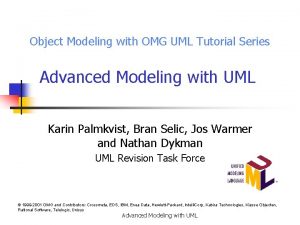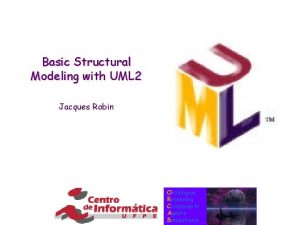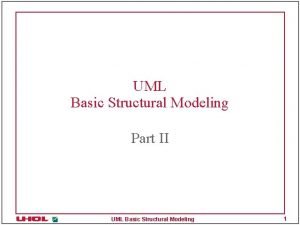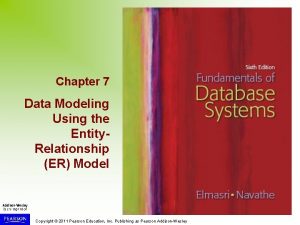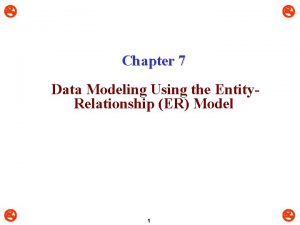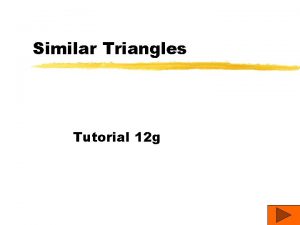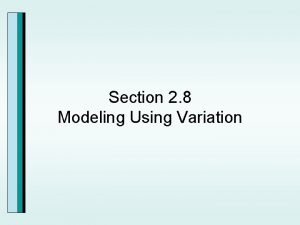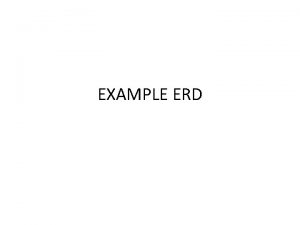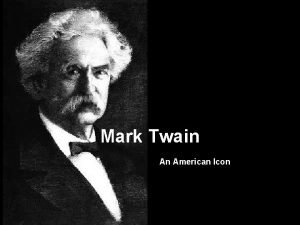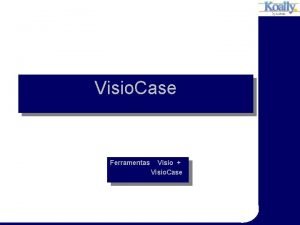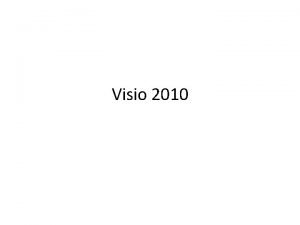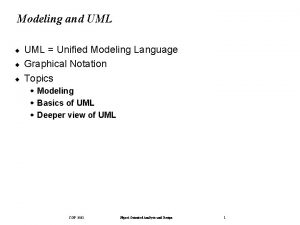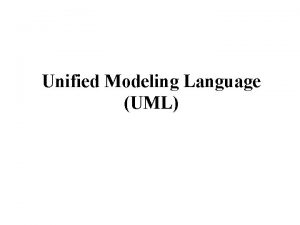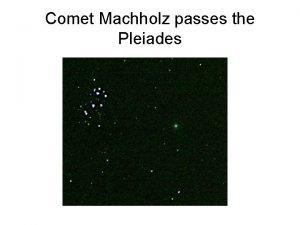Using COMET with Visio UML Modeling Creating a



























- Slides: 27

Using COMET with Visio UML Modeling

Creating a Drawing • After opening Visio, you will see a list of templates available.

Create a Drawing (cont) • Under the Software Engineering folder, select UML Model Diagram • After choosing your units, select “Create”

Create a Drawing (cont) • You will be taken to a new drawing with the UML shapes and Model Explorer visible.

Shapes Library • The Shapes Library is on the left hand side. • Shapes are organized by the kind of UML diagram they appear on.

Model Explorer • The Model Explorer is also on the left hand side. • All the objects you create will be shown here in a hierarchy for easy access.

Adding Stereotypes • To add stereotypes, right click on the system in the Model Explorer • Select “Stereotypes…” and the Stereotypes dialog will appear.

Adding Stereotypes (cont) • Click “New” to create a new stereotype • You can specify the name, and the base class the stereotype applies to.

Adding Stereotypes (cont) • Lets make the entity stereotype for classes. Click OK to finish.

Use Case Diagrams • First, select the UML Use Case section of the shapes library

Use Case Diagrams (cont) • Drag a use case onto the drawing.

Use Case Diagrams (cont) • Double-click the Use Case to open its properties dialog, and give it a name.

Use Case Diagrams (cont) • Repeat this process with an Actor

Use Case Diagrams (cont) • Find the Communications Connector in the UML Use Case shapes, and drag it onto the drawing. .

Use Case Diagrams (cont) • After linking the Actor and Use case, double-click the Communication Connector to open its properties.

Use Case Diagrams (cont) • Note you can change the end names and multiplicities. • Blank all but a multiplicity of 1 for the Driver.

Use Case Diagrams (cont) • The Use Case is now Finished.

Class Diagrams • In a new drawing, select the UML Static Structure shapes.

Class Diagrams (cont) • Drag a Class onto the drawing.

Class Diagrams (cont) • Double Click on the new class to open its properties, where you can change its name.

Class Diagrams (cont) • You can also add attributes and operations to the class.

Class Diagrams (cont) • After creating several basic classes, right-click on one and select “Shape Display Options”

Class Diagrams (cont) • Note that you can suppress the visibility of the Attributes and Operations fields.

Class Diagrams (cont) • To define a composition or aggregation relationship, use the Composition connector.

Class Diagrams (cont) • Changing the Aggregation to “shared” replaces the solid diamond with a transparent one.

Class Diagrams (cont) • After editing the properties of the Composition connector, connect its ends to the appropriate objects.

Class Diagrams (cont) • Similarly, generalization relationships are shown with a Generalization connector.
 Uml model visio
Uml model visio Relational vs dimensional data modeling
Relational vs dimensional data modeling Helen c. erickson nursing theory
Helen c. erickson nursing theory Uml modeling tutorial
Uml modeling tutorial Uml class diagram
Uml class diagram Structural modeling in uml
Structural modeling in uml Common mechanisms in basic structural modeling
Common mechanisms in basic structural modeling Uml2.0
Uml2.0 Modeling of digital communication systems using simulink
Modeling of digital communication systems using simulink Data modeling using entity relationship model
Data modeling using entity relationship model Erd identifying relationship
Erd identifying relationship Lesson 12 modeling using similarity
Lesson 12 modeling using similarity Modeling of digital communication systems using simulink
Modeling of digital communication systems using simulink Modeling using variation
Modeling using variation Object-oriented analysis and design
Object-oriented analysis and design Erd uml notation
Erd uml notation Introduction to ooad
Introduction to ooad Object-oriented systems analysis and design using uml
Object-oriented systems analysis and design using uml Comet meted
Comet meted Ucar satellite
Ucar satellite Comet transformer
Comet transformer Stanford math tournament 2018 problems
Stanford math tournament 2018 problems Alliteration in song lyrics
Alliteration in song lyrics Rocky, stony or metallic debris
Rocky, stony or metallic debris When was the hale bopp comet
When was the hale bopp comet Jeff chambers md
Jeff chambers md Halley's comet
Halley's comet Right side up agency
Right side up agency



